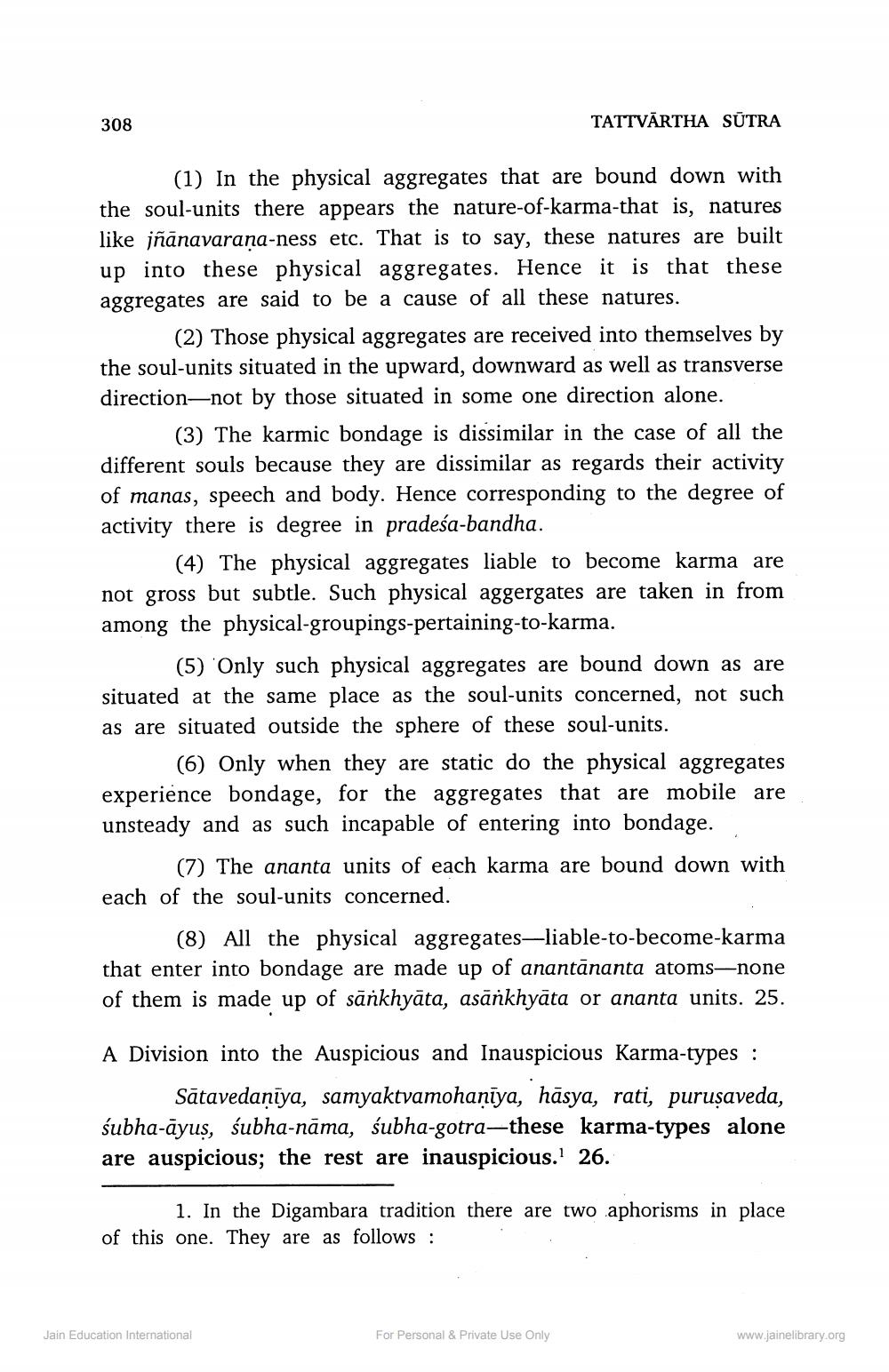________________
308
TATTVĀRTHA SŪTRA
(1) In the physical aggregates that are bound down with the soul-units there appears the nature-of-karma-that is, natures like jñānavaraṇa-ness etc. That is to say, these natures are built up into these physical aggregates. Hence it is that these aggregates are said to be a cause of all these natures.
(2) Those physical aggregates are received into themselves by the soul-units situated in the upward, downward as well as transverse direction—not by those situated in some one direction alone.
(3) The karmic bondage is dissimilar in the case of all the different souls because they are dissimilar as regards their activity of manas, speech and body. Hence corresponding to the degree of activity there is degree in pradeśa-bandha.
(4) The physical aggregates liable to become karma are not gross but subtle. Such physical aggergates are taken in from among the physical-groupings-pertaining-to-karma.
(5) 'Only such physical aggregates are bound down as are situated at the same place as the soul-units concerned, not such as are situated outside the sphere of these soul-units.
(6) Only when they are static do the physical aggregates experience bondage, for the aggregates that are mobile are unsteady and as such incapable of entering into bondage.
(7) The ananta units of each karma are bound down with each of the soul-units concerned.
(8) All the physical aggregates—liable-to-become-karma that enter into bondage are made up of anantānanta atoms—none of them is made up of sankhyāta, asānkhyāta or ananta units. 25.
A Division into the Auspicious and Inauspicious Karma-types :
Sātavedaniya, samyaktvamohaniya, hāsya, rati, puruṣaveda, śubha-āyus, śubha-nāma, śubha-gotra—these karma-types alone are auspicious; the rest are inauspicious. 26.
1. In the Digambara tradition there are two aphorisms in place of this one. They are as follows:
Jain Education International
For Personal & Private Use Only
www.jainelibrary.org




